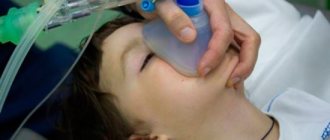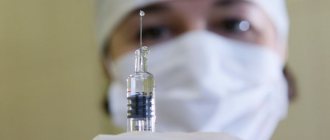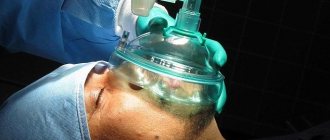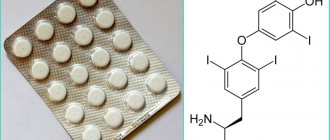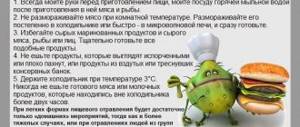The topic of anesthesia is surrounded by a considerable number of myths, and all of them are quite frightening. Parents, faced with the need to treat a child under anesthesia, are usually worried and afraid of negative consequences. Vladislav Krasnov, an anesthesiologist at the Beauty Line group of medical companies, will help Letidor figure out what is true and what is false in the 11 most famous myths about childhood anesthesia.
Myth 1: a child will not wake up after anesthesia
This is the worst consequence that moms and dads fear. And quite fair for a loving and caring parent. Medical statistics, which mathematically determine the ratio of successful and unsuccessful procedures, also exist in anesthesiology. A certain percentage, although fortunately negligible, of failures, including fatal ones, does exist.
This percentage in modern anesthesiology, according to American statistics, is as follows: 2 fatal complications per 1 million procedures; in Europe it is 6 such complications per 1 million anesthesias.
Complications in anesthesiology occur, as in any field of medicine. But the tiny percentage of such complications is a reason for optimism among both young patients and their parents.
Myth 2: The child will wake up during the operation
Using modern methods of anesthesia and its monitoring, it is possible with a probability close to 100% to guarantee that the patient will not awaken during surgery.
Modern anesthetics and anesthesia monitoring methods (for example, BIS technology or entropy methods) allow precise dosing of drugs and monitoring of its depth. Today there are real opportunities to receive feedback on the depth of anesthesia, its quality, and expected duration.
General anesthesia is a procedure by which the patient’s autonomic reactions are suppressed, turning off his consciousness . Despite the fact that anesthesia has been used for a very long time, the need for its use, especially in children, causes a lot of fears and concerns among parents. What are the dangers of general anesthesia for a child?
General anesthesia: is it really necessary?
Many parents are sure that general anesthesia is very dangerous for their child, but they cannot say exactly why. One of the main fears is that the child may not wake up after surgery . Such cases have indeed been recorded, but they occur extremely rarely. Most often, painkillers have nothing to do with them, and death occurs as a result of the surgery itself.
Before performing anesthesia, the specialist obtains written permission from the parents. However, before abandoning its use, you should think carefully, since some cases require the mandatory use of complex anesthesia.
Typically, general anesthesia is used if it is necessary to turn off the child’s consciousness, protect him from fear, pain and prevent the stress that the child will experience while being present at his own operation, which can negatively affect his still fragile psyche.
Before using general anesthesia, the specialist identifies contraindications, and also makes a decision: is there really a need for it.
Drug-induced deep sleep allows doctors to perform lengthy and complex surgical procedures. Typically, the procedure is used in pediatric surgery when pain relief is vital , for example, for severe congenital heart defects and other abnormalities.
However, anesthesia is not such a harmless procedure.
Contraindications
There are no absolute contraindications to general anesthesia.
Relative contraindications may include:
The presence of concomitant pathology that can negatively affect the condition during anesthesia or recovery after it. For example, constitutional anomalies accompanied by hypertrophy of the thymus gland.
A disease accompanied by difficulty in nasal breathing. For example, due to a deviated nasal septum, proliferation of adenoids, chronic rhinitis (for inhalation anesthesia).
Having allergies to medications. Sometimes the child is given allergy tests before surgery. As a result of such tests (skin tests or in vitro tests), the doctor will have an idea of which drugs the body takes and which it gives an allergic reaction to.
Based on this, the doctor will decide in favor of using one or another drug for anesthesia.
If the child suffered an acute respiratory viral infection or another infection with fever the day before, the operation is postponed until the body is completely restored (the interval between the illness and treatment under anesthesia must be at least 2 weeks).
If the child has eaten before surgery. Children with a full stomach are not allowed to undergo surgery, as there is a high risk of aspiration (stomach contents entering the lungs).
If the operation cannot be postponed, the gastric contents can be evacuated using a gastric tube.
Preparation for the procedure
It is wiser to prepare your baby for the upcoming anesthesia just 2-5 days in advance . To do this, he is prescribed sleeping pills and sedatives that affect metabolic processes.
About half an hour before anesthesia, the baby can be given atropine, pipolfen or promedol - drugs that enhance the effect of the main anesthetic drugs and help avoid their negative effects.
Before performing the manipulation, the baby is given an enema and the contents of the bladder are removed. 4 hours before the operation, the intake of food and water is completely excluded, since during the intervention vomiting may begin, in which the vomit can penetrate the organs of the respiratory system and cause respiratory arrest. In some cases, gastric lavage is done.
The procedure is performed using a mask or a special tube that is placed in the trachea . Together with oxygen, anesthetic medicine is supplied from the device. In addition, anesthetics are administered intravenously to alleviate the condition of the little patient.
"Sodium thiopental"
The drug is a powder with a subtle smell of sulfur. After intravenous administration, it begins to act within a minute. The effect lasts for 20-30 minutes. Given the route of administration, the doctor has no ability to influence the nature of the drug’s effects.
The product has its disadvantages:
"Sodium thiopental" instructions for use recommend administering it slowly, as depression of the respiratory and vasomotor centers, as well as respiratory arrest, is possible.
Diagnosis of complications
Even if a small patient is well prepared before surgery, this does not guarantee the absence of complications associated with anesthesia . That is why specialists should be aware of all the possible negative effects of drugs, common dangerous consequences, probable causes, as well as ways to prevent and eliminate them.
Adequate and timely identification of complications that arise after the use of anesthesia plays a huge role. During the operation, as well as after it, the anesthesiologist must carefully monitor the baby’s condition.
To do this, the specialist records all the manipulations performed and also enters the test results into a special card.
The card must record:
- heart rate indicators;
- breathing rate;
- temperature readings;
- the amount of blood transfused and other indicators.
These data are strictly recorded hourly. Such measures will allow you to identify any violations in time and quickly eliminate them .
Visit to the dental office
In the event of complicated caries or the need to remove an entire tooth, the situation changes radically, and the use of local anesthesia becomes necessary. The attending physician must be informed about the situation of the pregnant woman.
Important! Much depends on the individual sensitivity of the patient - local anesthesia can be avoided if you are able to withstand the pain from the procedure.
While carrying a child, the mother’s mood is felt by the child, which is why if teeth are extremely sensitive, it is recommended to inject a painkiller when treating them.
Mechanism of tooth destruction
Early consequences
The effect of general anesthesia on the child’s body depends on the individual characteristics of the patient. Most often, complications that arise after the baby returns to consciousness are not much different from the reaction to anesthesia in adults .
The most commonly observed negative consequences are:
- the appearance of allergies, anaphylaxis, Quincke's edema;
- cardiac dysfunction, arrhythmia, incomplete blockade of the His bundle;
- increased weakness, drowsiness. Most often, such conditions go away on their own, after 1-2 hours;
- increase in body temperature. It is considered normal, but if the level reaches 38 ° C, there is a possibility of infectious complications. Having identified the cause of this condition, the doctor prescribes antibiotics;
- nausea and vomiting. These symptoms are treated with the use of antiemetics, for example, cerucal;
- headaches, feeling of heaviness and squeezing in the temples. Usually they do not require special treatment, however, for prolonged pain symptoms, a specialist prescribes painkillers;
- pain in the postoperative wound. A common consequence after surgery. To eliminate it, antispasmodics or analgesics can be used;
- fluctuations in blood pressure. Usually observed as a result of large blood loss or after a blood transfusion;
- falling into a coma.
Any drug used for local or general anesthesia can have a toxic effect on the patient’s liver tissue and lead to liver dysfunction.
Side effects of anesthesia agents depend on the specific drug. Knowing about all the negative effects of the medicine, you can avoid many dangerous consequences, one of which is liver damage:
- Ketamine, often used in anesthesia, can provoke psychomotor overexcitation, seizures, and hallucinations.
- Sodium hydroxybutyrate. May cause convulsions when used in large dosages;
- Succinylcholine and drugs based on it often provoke bradycardia, which threatens to stop the activity of the heart - asystole;
- Muscle relaxants used for general anesthesia may lower blood pressure.
Fortunately, serious consequences are extremely rare.
Types of pain relief techniques used
In medical practice, there are several types of pain relief:
- Inhalation or hardware-mask - the patient receives a dose of painkillers in the form of an inhalation mixture. It is used for short, simple operations.
Watch its action and main stages in this video:
- Intramuscular anesthesia for children is practically not used today. Because the anesthesiologist cannot control the duration of sleep. The drug used, Ketamine, is harmful to the body. It can turn off long-term memory for almost 6 months, which affects full development.
- Intravenous – has a multicomponent pharmacological effect on the body. Ventilation of the lungs is performed with a special apparatus. Anesthesia is used extremely rarely for children, only when absolutely necessary.
We also recommend reading: Tracheal intubation
Late complications
Even if the surgical intervention went without complications, no reactions to the drugs used occurred, this does not mean that there was no negative impact on the child’s body. Late complications may appear after some time, even after several years .
Dangerous long-term consequences include:
- cognitive impairment: memory disorder, difficulty in logical thinking, difficulty concentrating on objects. In these cases, it is difficult for the child to study at school, he is often distracted, and cannot read books for a long time;
- attention deficit disorder, hyperactivity. These disorders are expressed by excessive impulsiveness, a tendency to frequent injuries, restlessness;
- susceptibility to headaches, migraine attacks, which are difficult to suppress with painkillers;
- frequent dizziness;
- the appearance of convulsive contractions in the leg muscles;
- slowly progressive pathologies of the liver and kidneys.
The safety and comfort of surgical intervention, as well as the absence of any dangerous consequences, often depend on the professionalism of the anesthesiologist and surgeon.
Consequences for children 1-3 years old
Due to the fact that the central nervous system in young children is not fully formed, the use of general anesthesia can negatively affect their development and general condition. In addition to attention deficit disorder, pain relief can provoke brain disorders and lead to the following complications:
- Slow physical development. Medicines used in anesthesia can disrupt the formation of the parathyroid gland, which is responsible for the growth of the baby. In these cases, he may lag behind in growth, but subsequently is able to catch up with his peers.
- Psychomotor development disorder . Such children learn to read late, have difficulty remembering numbers, pronounce words incorrectly, and construct sentences.
- Epileptic seizures. These disorders are quite rare, but several cases of epilepsy have been identified after surgical interventions using general anesthesia.
"Ether"
The use of "Ether" is quite common because the drug has many advantages:
It is necessary to note the disadvantages of the product:
"Ether" for anesthesia has side effects:
Is it possible to prevent complications?
It is impossible to say for sure whether any consequences will arise after the operation in children, as well as at what time and how they may appear. However, you can reduce the likelihood of negative reactions in the following ways:
- Before the operation, the child’s body must be completely examined , passing all the tests prescribed by the doctor.
- After surgery, you should use drugs that improve cerebral circulation, as well as vitamin and mineral complexes prescribed by a neurologist. The most commonly used are B vitamins, piracetam, and Cavinton.
- Carefully monitor the baby's condition. After the operation, parents need to monitor its development even after some time. If any deviations appear, it is worth visiting a specialist once again to eliminate possible risks .
Having decided to carry out the procedure, the specialist compares the need for it with the possible harm. Even after learning about possible complications, you should not refuse surgical procedures: not only the health, but also the life of the child may depend on this. The most important thing is to be attentive to his health and not self-medicate.
General anesthesia used in children can have many consequences. The child's body grows and develops very quickly, and any interference with the central nervous system can negatively affect the child's development. This article discusses the main complications that can develop after surgery using general anesthesia.
How general anesthesia is performed in pediatric practice
If we are talking about an emergency situation, children are operated on as soon as possible due to their condition, and general anesthesia is carried out with quick and active techniques, we are talking about saving health and life. The doctor focuses on a specific situation, using the method that will be faster and more effective. If the operation is planned, it is possible to fully prepare for it, which will minimize the risk of complications. For surgery and general anesthesia, the child must be healthy - exacerbations of chronic pathology, acute infections will become temporary contraindications for intervention. In these conditions, general anesthesia carries a high risk.
Before performing general anesthesia, the anesthesiologist talks with the parents and examines the child, and only then does he give permission for the operation. He tells parents in detail about what kind of anesthesia is planned and what amount of preoperative preparation is needed, what is required from parents and the baby himself according to his age.
Before putting a child under anesthesia, it is recommended that one of the parents (or relatives, guardians) be directly with him until he falls asleep and enters an anesthesia state. To put a child into a state of anesthesia, special masks and breathing devices of only children's type are used, selected strictly according to age.
After children enter medicated sleep, doctors use medications to achieve maximum muscle relaxation and complete pain relief. While the child is under anesthesia, surgeons begin surgery. Throughout the operation, the anesthesiologist monitors the vital signs of the child under anesthesia and, if necessary, adjusts the supply of drugs. As the operation is completed, the doctor reduces the concentration of drugs in the dropper or in the inhaled mixture, which leads to the child regaining consciousness. While the baby is under anesthesia, his consciousness is completely turned off, he does not feel pain impulses, breathing usually occurs due to the ventilator, and the monitors reflect indicators of pulse and pressure, blood oxygenation and some others.
Cause of complications
General anesthesia is a state of deep sleep that is induced by medications. Thanks to anesthesia, doctors have the opportunity to perform long and complex operations. This is especially significant in pediatric surgery, because now children who are born with severe malformations of the cardiovascular system and other abnormalities have a chance to live.
But anesthesia itself is not a harmless procedure. Recently, doctors have conducted a lot of research on its complications and consequences. A special place in their work was given to the influence of general anesthesia on children. Speaking about adults, allergic reactions to injected drugs and complications from the heart are more relevant; in the case of children, problems associated with slow development and disruption of the central nervous system come to the fore.
Drugs used for general anesthesia in children under three years of age can affect the development and formation of nerve connections between neurons in the brain and the processes of myelination of nerves (the formation of a sheath around a nerve fiber). These changes in the central nervous system are the causes of negative consequences in the development of the child. When deciding on an operation, the doctor must always weigh the need for it with the harm to the child’s body.
Other painkillers
Anesthesia for wisdom tooth removal is no different from that used when working with other units. Painkillers based on articaine have a persistent anesthetic effect and a minimal list of side effects.
Wisdom teeth, as a rule, are removed not because of their damage, but due to an abnormal position in the dentition. The list of the most complex pathologies includes retention and dystopia. The latter is expressed in the fact that the tooth rotates around its axis and moves toward the tongue (cheek) during eruption.
With retention, the rudiments of a wisdom tooth form in the jaw, but the tooth itself does not develop further and does not erupt. In such a situation, the dentist is forced to cut the gum, remove the un-erupted tooth, and apply sutures to the soft tissue. Such manipulations are performed under local anesthesia.
Baby teeth that cannot be treated or those that have caused inflammation of the soft tissues must also be removed. The method and name of the anesthetic drug are selected by the doctor individually. So, if the tooth is so mobile that one can come to the conclusion that its root is almost completely reabsorbed, it is enough to apply an anesthetic gel or aerosol to the corresponding area before removal.
Most often, when working with baby teeth, dentists give preference to infiltration anesthesia - they administer Lidocaine and Ubistezin Forte in two injections (from the tongue and gums). The dosage of the latter is selected based on the child’s body weight. These anesthetics are usually well tolerated by children and do not cause side effects.
Late complications after anesthesia in children
Even if the operation was successful, without complications, and there was no reaction to the anesthetic, this does not guarantee that there was no negative effect on the child’s body. Long-term consequences do not appear immediately. They can become noticeable even after a few years.
Late complications include:
- Cognitive disorders and attention deficit hyperactivity disorder are described in detail below.
- Chronic and frequent headaches, sometimes in the form of migraines. The occurrence of a headache is usually not associated with any triggering factors. The whole head may hurt, or half of it. The pain is practically not relieved by analgesics.
- Sluggish disturbances in the liver and kidneys.
- Frequent dizziness.
- Leg muscle cramps.
Cognitive disorders develop most often. These include:
- Memory disorders in children. It can manifest itself as difficulty in memorizing educational material. For example, it may be difficult for children to learn foreign languages and poetry. Memory may also be impaired for other reasons, for example, due to a lack of iodine in the body.
It is difficult for a child to remember new material
- Violation of logical thinking. It is difficult for children to draw conclusions and look for connections between events.
- Difficulty concentrating on one thing. Such children do not like to read books and find it difficult at school. Usually during training they are distracted and talk. And parents punish and scold them, instead of understanding the reason for the child’s behavior.
In addition to cognitive disorders, anesthesia is dangerous due to the possibility of developing attention deficit hyperactivity disorder. It is manifested by impulsive behavior, impaired attention of the baby and hyperactivity. Such children cannot predict the consequences of their actions, which is why they are frequent guests of trauma centers. They find it difficult to complete any task or adhere to the rules of the game. Hyperactivity is manifested by difficulty sitting in one place for a long time. During lessons they fidget, turn from side to side, chat with classmates.
Consequences in young children
The central system in children under three years of age develops very quickly. And at three years the brain weight is almost the same as that of an adult. Any interventions at this age can have serious consequences. General anesthesia at this age is especially harmful and dangerous.
In addition to attention deficit disorder and cognitive disorders, it can cause harm in the formation of nerve pathways and fibers, connections between parts of the brain, which can lead to the following consequences:
- Retarded physical development. The drugs can harm the parathyroid gland, which is responsible for the growth of the child. Such children may be delayed in growth, but as a rule, they later catch up with their peers.
- Slowing of psychomotor development. Children who have undergone general anesthesia may find it difficult to learn to read, remember numbers, pronounce words correctly, and construct sentences.
- Epilepsy. This complication is quite rare, but clinical cases have been described in which this disease started after surgical interventions.
